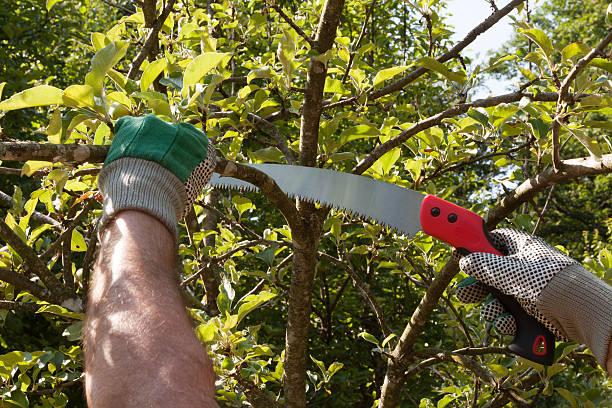Pruning is a vital practice in gardening and landscaping, enabling the maintenance and health of plants, trees, and shrubs. Pruning not only improves the appearance of plants but also encourages their growth and longevity. Among the essential tools for successful pruning is the pruning saw. In this comprehensive guide, we will delve into the world of pruning saws, exploring their types, features, and the benefits they offer to gardeners and landscapers. Whether you are a novice gardener or an experienced horticulturist, this guide will equip you with the knowledge and skills to master the art of pruning.
Understanding Pruning Saws
Pruning saws are specialized cutting tools designed for cutting through woody branches and stems in the garden. Unlike traditional saws, pruning saws feature a curved or straight blade with sharp teeth optimized for cutting green and live wood. They are engineered to handle thicker and tougher branches that pruning shears or hand pruners cannot easily manage. With pruning saws, gardeners can make precise and clean cuts, promoting the healthy growth of plants.
Types of Pruning Saws
- a) Folding Pruning Saws: These saws have a blade that can be folded into the handle, making them compact and easy to carry. Folding pruning saws are perfect for gardeners on the go or those with limited storage space.
- b) Straight Blade Pruning Saws: Straight blade pruning saws have a fixed blade, typically with larger teeth for cutting through thick branches quickly. They provide excellent stability and control during pruning tasks.
- c) Curved Blade Pruning Saws: Curved blade pruning saws have a blade with a slight curve, which allows for more efficient cutting in tight spaces and intricate branches.
Features to Consider
- a) Blade Length: The blade length determines the size of branches the pruning saw can handle. Longer blades are suitable for larger branches, while shorter blades are ideal for smaller plants and shrubs.
- b) Teeth Per Inch (TPI): The number of teeth per inch on the blade affects the saw's cutting efficiency. A higher TPI is best for smoother cuts on finer wood, while a lower TPI is more suitable for cutting thicker branches.
- c) Tooth Design: Pruning saws come with different tooth designs, such as triple-ground teeth, impulse-hardened teeth, or serrated teeth. Each design offers specific benefits in terms of cutting speed and precision.
- d) Comfortable Handle: A comfortable and ergonomic handle is essential for reducing hand fatigue during prolonged pruning sessions. Look for handles made of non-slip materials for better grip.
Benefits of Pruning Saws
- a) Versatility: Pruning saws are versatile tools that can be used for a wide range of cutting tasks, from pruning small shrubs to trimming thick branches on trees.
- b) Precision Cutting: The sharp and specially designed teeth of pruning saws allow for precise and clean cuts, promoting the health of the plants and minimizing damage.
- c) Efficiency: With pruning saws, gardeners can make quick and efficient cuts, saving time and effort during pruning sessions.
- d) Enhanced Safety: Using a pruning saw ensures that cuts are made with proper control and stability, reducing the risk of accidents or injuries.
- e) Durability: Pruning saws are built to withstand tough cutting conditions and are made from durable materials, ensuring long-lasting performance.
Pruning saws are indispensable tools for any gardener or landscaper looking to achieve precise and efficient pruning results. Understanding the different types, features, and the numerous benefits they offer will empower you to enhance the health and beauty of your garden. Whether you have a small backyard or a vast landscape, mastering the art of pruning with the right pruning saw will lead to flourishing plants, healthier trees, and a garden that reflects your gardening prowess. So, equip yourself with a quality pruning saw, and embark on a pruning journey that transforms your garden into a thriving oasis of beauty and abundance.
